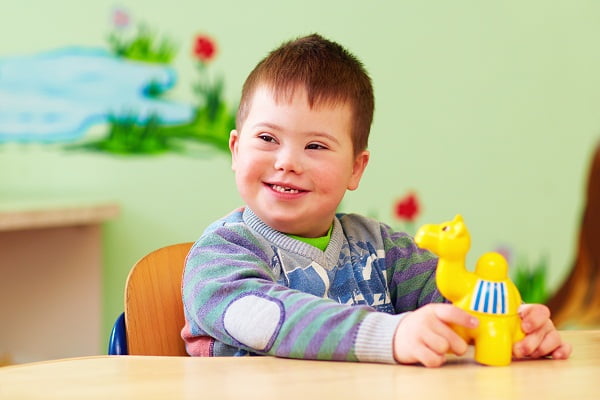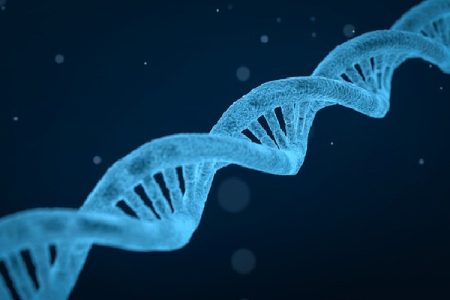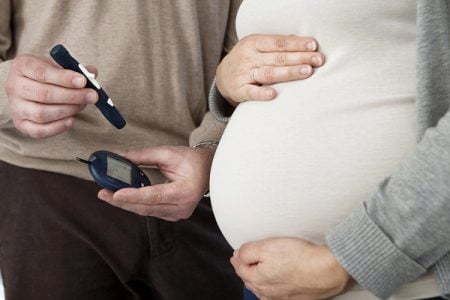
Eyes in Down Syndrome
Down syndrome is associated with many physical disabilities and among such disabilities eye problems are most common ranging from mild to severe issues. It has been reported that almost half of the patients with Down syndrome have mild to severe eye diseases. Mild eye diseases may include abnormalities in tear duct while severe complications can include early age cataracts. Down syndrome may result in improper development of the vision as it can severely effect a developing eye. Some of the basic characteristics of eyes in people with Down syndrome are:
- Brushfield’s spots, tiny spots on the colored part (iris) of eyes. These spots are however harmless and can even be found in people without Down syndrome.
- Eyelids are upwardly slanted.
- The skin between the eyes and nose has some types of prominent folds.
Down syndrome eye problems
Eye problems in Down syndrome can be mild or severe.
Mild eye problems in Down syndrome patients
Following are some of the mild eye problems found in Down syndrome patients:
Tear duct abnormalities
Many children with Down syndrome have abnormalities in their tear ducts characterized by tearing and discharge from the eyes. These tear abnormalities usually get worsened by colds.
Massage over the tear sac region (space between the eye and nose) ideally 2 to 3 times in a day can open the tear duct.
Surgical procedure can be recommended if the problem persists beyond a year of age.
Strabismus(eye misalignment)
Strabismus is more common in Down syndrome. The eyes do not line up well and appear as if they are crossing, although they are not. Strabismus should be diagnosed as early as possible in a child, otherwise it may result in amblyopia or lazy eye i.e. loss of vision. Loss of Stereopsis (perception in depth or use of both eyes together) can also occur if strabismus is not diagnosed early.
Ideally, glasses can be used to straighten the eyes with strabismus but sometimes strabismus surgery (surgery of eye muscles) is also required.
Down syndrome strabismus requires more than one surgery for proper alignment of the eyes when compared with strabismus in general population.
Keratoconus
This is a condition in which the cornea of eye grows into a cone shape leading to distorted vision. Keratoconus is more common in young people with Down syndrome and almost 10% of young people with Down syndrome are affected with it. However, it can occur in general population also. This condition cannot be corrected by using spectacles, instead it can be managed by using contact lenses. If left untreated, keratoconus can cause the cornea to become fragile and thin and ultimately leading to the formation of a scar tissue which further reduces the vision.
Sight loss caused by keratoconus can be treated by using a method called cross-linkage therapy. In cross-linkage therapy, few drops are put onto the cornea and then UV light is used which activates these drops and seals the corneal tissue and stops it from getting distorted. It is a successful treatment option provided the disease is diagnosed early. The cornea is generally thin in young people with Down syndrome, so the keratoconus in such people should be diagnosed as early as possible because the treatment should be started before the cornea thins too much.
Severe eye problems
One of the severe eye problem found in Down syndrome is congenital cataract where the lens of the eye lacks clearness. Cataract present early in a child’s eye is a severe form of amblyopia, also known as deprivational amblyopia in which the brain does not receive a clear image and never learns to see.
If cataracts are present very early in the age of a child and are not removed, it can result in a lifelong poor vision and even if the cataract is removed later when the child is an adult, the vision can never improve much. This is the reason that makes early detection of cataract in infants very important.
An early eye examination in patients with Down syndrome can help in avoiding eye vision loss caused by cataract.
Other Eye problems in Down syndrome
Some other common eye problems associated with Down syndrome are:
Glaucoma
A patient feels excess pressure in the eyes if he or she has glaucoma.
Nystagmus
The eyes of a patient move uncontrollably usually from side to side.
Short-sightedness
These patients cannot see the far away objects clearly. It is also called myopia.
Long-sightedness
The nearby objects appear blurred to a patient.
Accommodation
Most of the children with Down syndrome are visually impaired at near distances which is one of the difficulties in early learning and literacy in such children. Bifocals have been found to be useful in such children and help them in using their own accommodative ability. Bifocals have improved the accommodative ability in almost 65% of Down syndrome children and 53% of children have returned to single vision lenses after the improvement.
Signs and symptoms of eye problems in Down syndrome
It is difficult to detect eye problems in children with Down syndrome because either they don’t notice the problem or they don’t communicate about the problem in a proper way. Here are some signs that can help parents and teachers in the detection of eye problems in such children:
- Sensitivity to light
- Crossing of either one or both eyes.
- Squinting
- Unusual tilting of head
- Closing one eye shut
- Drooping of eye lids (ptosis)
- Blockage of tear ducts resulting in discharge and tearing
Management of eye problems in Down syndrome
Eye problems in Down syndrome can be somehow managed by following these steps:
- New born babies should be evaluated for nystagmus, cataracts and strabismus within the first 6 months of life.
- Children between the age group of 5 to 13 years should be evaluated biannually for the onset of new ophthalmic disorders.
- Annual evaluation of newborns should be done for refractive error, strabismus and other amblyopia causing conditions until the age of 5.






